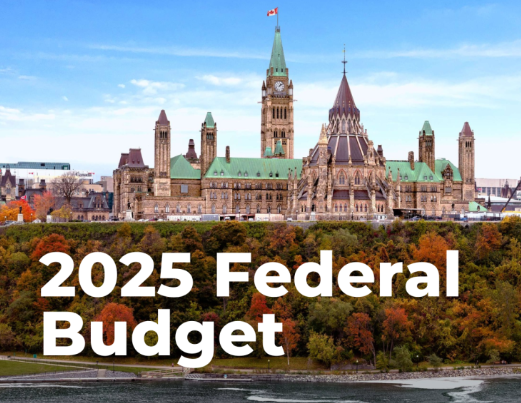Key Housing & Real Estate-Related Measures
Here are the major housing/real estate items from Budget 2025:
-
A new federal agency called Build Canada Homes is being launched to help accelerate housing supply — the budget notes this will “drive investment and public-private cooperation” to build homes faster and smarter. (Budget Canada)
-
The budget emphasises building many more homes: it highlights that to restore affordability to 2019 levels, home-building in Canada must nearly double (from ~280,000 homes per year to ~430,000-480,000 homes per year over the next decade). (Budget Canada)
-
Increased support for multi-unit rental housing via expansion of the annual issuance limit for the Canada Mortgage Bonds (CMB) program — the limit is raised to $80 billion annually (from $60 billion). This is aimed at boosting liquidity for lenders and developers of five-unit+ rental properties. (Mortgage News Canada)
-
Additional funding of $2.8 billion for urban, rural and northern Indigenous housing over existing programs. (Mortgage News Canada)
-
The budget confirms the elimination of the Underused Housing Tax (UHT) for the 2025 calendar year and onward — meaning no UHT filings or payments will be required for 2025 +. (Mortgage News Canada)
What These Mean for the Real-Estate Market (Lower Mainland & Beyond)
Here’s how the above measures might play out across different segments of the market (for homeowners, buyers, investors) — with a local twist for places like the Lower Mainland / Fraser Valley.
Home Buyers
-
The push to build more homes (especially rentals and multi-unit housing) and the agency Build Canada Homes signal the government is trying to expand supply — this could help moderate upward pressure on prices in the medium term.
-
The UHT elimination is interesting: for owners who were worried about the tax on vacant/under-utilised property, the removal might reduce a cost risk — although this mostly affects non-resident owners or highly-specialised portfolios.
-
For first-time buyers in high-cost markets like Vancouver, Langley, Chilliwack etc., more rental supply and multi-unit build-outs may create better stepping-stone options (townhouses, row homes, rentals) rather than just detached homes.
-
But note: the budget doesn’t appear to introduce significant new direct subsidy programmes for detached-home buyers in high-price markets — much of the focus is on supply and rental/Indigenous housing. So affordability remains a challenge in tight markets.
Home Sellers & Homeowners
-
With more supply coming (especially rental and multi-unit), sellers in neighbourhoods with high new-build pipeline may face increased competition in coming years.
-
Upgrades and presentation may matter more: in markets like Lower Mainland where inventory is rising, homes that differentiate (condition, location, layout) may hold value better.
-
For homeowners holding property that might fall under “under-used” classification (vacancies, second homes etc.), the removal of UHT reduces one risk — though local/municipal vacancy taxes may still apply.
Investors & Multi-unit Developers
-
The expansion of the CMB programme to $80 billion is a strong green-light for rental and multi-unit development. Developers focusing on 5-unit+ properties (apartments, senior living, student residences) may benefit from improved access to financing or favourable mortgage market conditions.
-
The Build Canada Homes agency may offer new partnership opportunities: public lands, incentive-levers, faster approvals, innovative building methods could become more prominent.
-
Investors will want to keep an eye on how these supply-side expansions affect returns and cap-rates in markets (especially in secondary/suburban markets where new supply may cluster).
Local Implications for the Lower Mainland / Fraser Valley
-
The Lower Mainland remains a high-cost region with strong demand and limited detached-home supply. The federal supply push may help most in multi-unit segments (townhouses, condo-apartments, rentals) more than detached homes.
-
Sub-regions like Langley, Abbotsford, Chilliwack may stand to gain from more mid-density development (closer-in suburban growth, townhomes) since detached-home price growth may moderate and buyers may shift to alternatives.
-
For sellers of older homes, highlighting recent upgrades (furnace, roof, water-tank, secondary suites) and condition will support competitiveness since more options are being built.
-
For investors/developers in the region, the increased federal support for rental supply, multi-unit development and public-private partnerships may strengthen the viability of new developments and affordable-rental initiatives.
What to Watch (Risks & Uncertainties)
-
Timing & Implementation: Announcements are broad; actual project roll-out, approvals, construction timelines may lag. Supply increases may take years before effect.
-
Regional Variation: Federal programmes may help, but local zoning, municipal approvals, land costs remain a key bottleneck in regions like Metro Vancouver.
-
Affordability for Detached Homes: While supply efforts are strong, the budget doesn’t drastically change detached-home affordability (especially in hot markets). Buyers/sellers alike should remain realistic.
-
Interest Rate & Mortgage Environment: Mortgage rates, bank policies and the broader macroeconomic picture will still heavily influence real-estate activity — supply is only one side of the equation.
-
Local taxes/municipal policy: The UHT removal is federal, but local governments may introduce or retain vacancy taxes, encourage redevelopment etc. Owners/investors should monitor local measures.
Summary
-
Budget 2025 places housing supply at the heart of the real‐estate strategy: the aim is to dramatically increase housing units built, emphasise rental/multi-unit supply, and launch an agency (Build Canada Homes) to catalyse this.
-
For the real-estate market in the Lower Mainland / Fraser Valley: expect greater pressure in the multi-unit/rental segments, moderate shifts in detached home behaviour, and importance of condition/quality for existing homes.
-
For clients: Home-buyers should keep an eye on emerging multi-unit options and remain realistic about detached-home entry; sellers should emphasise value differentiators; investors/developers should explore rental/multi-unit opportunities and federal-programme participation.
-
While the budget is ambitious, the changes will likely play out over years — so market dynamics will evolve gradually rather than overnight.
-
Buyers, Sellers, Investors stay informed, consider how supply-side changes may impact your segment, and work with a local agent who understands how these federal shifts translate into local market conditions.
Other Sources:











